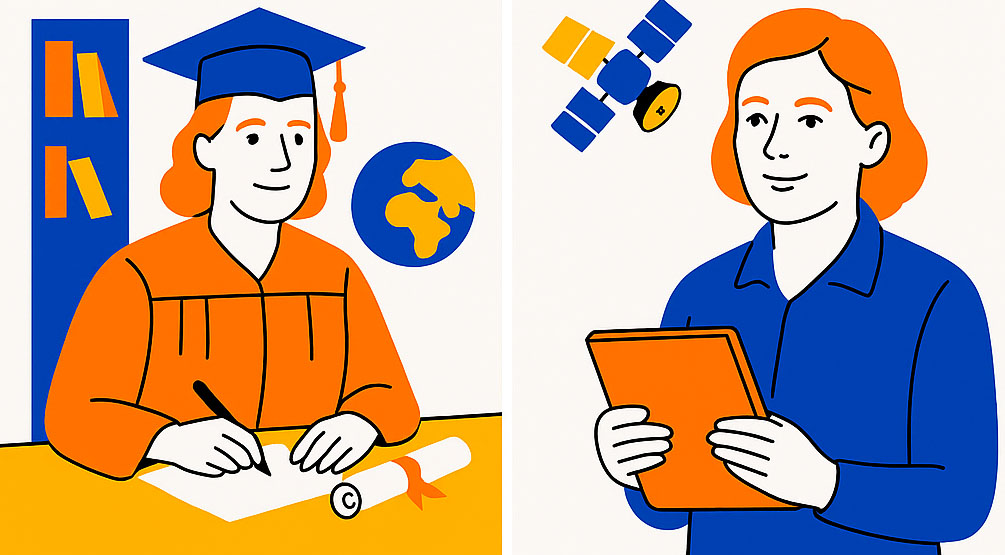Joanne Simpson was not born into the sky, but somehow, the sky always called to her. Born in 1923 in the United States, during a time when women were told to stay grounded, Joanne dared to look up. She didn’t just look at clouds—she chased them, studied them, questioned them. Where others saw passing weather, Joanne saw a language, a force, a frontier waiting to be understood. Her journey wasn’t just about science. It was about breaking barriers with brilliance and courage. She became the first woman in the United States to earn a Ph.D. in meteorology, and her legacy transformed not only our understanding of storms but also the role of women in science.
From an early age, Joanne found comfort in nature’s rhythms. The sound of wind brushing through trees felt like music. The swirl of clouds sparked curiosity, not fear. But the world around her didn’t reflect her passions. Teachers didn’t know what to do with a girl who loved physics and asked questions about the sky. Society whispered that girls like Joanne should learn to sew, not study turbulence. But Joanne didn’t bend to that wind. She became her own compass.
World War II created an unexpected opening. As young men left universities to join the military, educational institutions opened up spaces for women. Joanne stepped in with quiet determination. She studied hard, learned faster, and worked with a focus that startled her professors. At the University of Chicago, she found mentors who noticed her potential—though even there, she faced resistance. One professor reportedly told her there was no point in educating a woman in meteorology because she’d never get a job. That man would later have to revise his opinions—publicly and privately—as Joanne rose higher than he ever imagined.
The journey to her doctorate wasn’t smooth. Joanne was often the only woman in lecture halls, labs, or field research teams. Some doors remained shut; some required force to open. But Joanne developed a superpower—resilience mixed with brilliance. She wasn’t just smart—she was passionate, driven, and full of new ideas. She knew that clouds held secrets. And she knew how to read them.
She focused her research on cumulus clouds—those tall, puffy giants that build like dreams into the sky. Most meteorologists at the time ignored them. But Joanne knew better. She discovered how these clouds worked, how they transported heat and energy, how they grew and collapsed. Her research showed how critical these clouds were in driving weather systems, hurricanes, and global energy balance. She gave voice to clouds that had long gone misunderstood. In doing so, she rewrote how meteorology approached the atmosphere.

Then came Project Stormfury—a bold and slightly wild attempt to weaken hurricanes by flying planes into them and seeding the storm clouds with silver iodide. Joanne didn’t just support the theory; she boarded the planes. She soared into the eye of the storm, notebooks in hand, heart steady. Flying straight into the violence of hurricanes, Joanne gathered data that others could only dream of. She didn’t flinch. She recorded every motion of wind and wave, every burst of thunderclouds. And she made history while doing it.
But perhaps her greatest impact wasn’t just in the clouds—it was on the ground, in the halls of academia, in laboratories, and government agencies. She didn’t just chase data; she built systems. Joanne Simpson helped shape satellite meteorology at NASA. She was a lead scientist on the Tropical Rainfall Measuring Mission (TRMM), a joint NASA–Japan project that gave the world its first detailed look at rainstorms across the globe. Through satellite eyes, Joanne’s work helped nations predict floods, understand droughts, and prepare for disasters.
She authored over 190 scientific papers, each one a landmark. She rose to positions where few women had ever stood—leading research teams, shaping government policy, mentoring a new generation of scientists. She worked not for glory but for progress. And when people asked her how she did it, how she broke through the towering wall of gender expectations, she answered simply: “I was curious. I wanted to understand.”
Her story is not just about clouds and wind. It’s about light breaking through. Joanne Simpson proved that curiosity is stronger than bias, that vision is more powerful than prejudice. She didn’t just climb the ladder—she built new rungs for others to follow. She mentored women, encouraged them, opened the doors she once had to push alone. Her name became a guiding star for every girl who dreamed of understanding the sky.
Even after retirement, she remained a voice in the scientific world. She challenged assumptions, encouraged innovation, and warned of the growing risks of climate change. She knew that weather was more than a forecast—it was a living system that connected all of humanity. She urged the world to treat Earth with care, and science with courage.
Joanne passed away in 2010, but her spirit rises every time a satellite maps a storm, every time a young woman opens a textbook and sees her name, every time a plane flies into a hurricane equipped with tools she helped design.
Joanne Simpson was more than the first woman to earn a meteorology Ph.D. She was a storm chaser, a barrier breaker, a voice of the atmosphere, and a light in the often-cloudy world of science. Her story teaches us to reach beyond the expected, to question the ordinary, and to build pathways not just for ourselves but for generations to come.
She didn’t just study the sky. She became part of it. ✨
